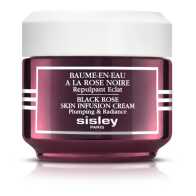
Nip+FabPost Glycolic Fix MoisturiserIngredients
Nip+Fab Post Glycolic Fix Moisturiser is a product from Uncategorized category with 40 ingredients. Notable: Octocrylene, Avobenzone, Glycerin, Titanium Dioxide (Sunscreen Grade), Tapioca Starch, Sodium Stearoyl Glutamate, Butyrospermum Parkii (Shea) Butter, Niacinamide, Tocopheryl Acetate, Citric Acid. The product is made by Nip+Fab.
Post Glycolic Fix Moisturiser provides following positive effects: UV Protection, Moisturizing, Cleansing, Acne fighting, Pore Shrinking and 16 more.
Organic score: 28% natural vs 68% chemical.
INCI
All the Positive
Concerns





ECO Metrics
Components by Skin Type
Detailed view
#1Water
Water is a great solvent. It’s neutral and doesn’t provide any strong positive or negative effects. It just helps components to mix better and to transport active components.
#2Octocrylene
Octocrylene is an organic chemical sunscreen. It protects against UVA and UVB rays that can damage your skin or even lead to melanoma. It also stabilizes other sunscreen ingredients in a formulation and increases the water resistance of a product. It is approved by the FDA in concentrations of up to 10%. It’s not a very effective component on its own, that’s why manufacturers combine it with other chemical sunscreens.
Despite its effectiveness, there are some “cons” against the component. As with any other chemical sunscreen, it is absorbed and can be detected in blood. This doesn’t mean the component is harmful, but still… Octocrylene should also be used carefully by anyone who is breastfeeding because it can be found in breast milk.
Anyway, the component isn’t researched quite well despite its popularity. More studies are required to determine how safe the component is.
Despite its effectiveness, there are some “cons” against the component. As with any other chemical sunscreen, it is absorbed and can be detected in blood. This doesn’t mean the component is harmful, but still… Octocrylene should also be used carefully by anyone who is breastfeeding because it can be found in breast milk.
Anyway, the component isn’t researched quite well despite its popularity. More studies are required to determine how safe the component is.
#3Ethylhexyl Methoxycinnamate
#4Caprylic/Capric Triglyceride
Caprylic/Capric Triglyceride is an emollient that also hydrates the skin without leaving a fatty film. When applied, the component feels smooth and light. In haircare products, it’s also used for hydrating purposes. It makes hair silky, lowers tangling, and makes hair smooth.
It’s safe for most people, except for people with allergic reactions to coconut or palm oil because these oils are usually used for producing the component.
#5Benzophenone-3
Compared With
No products found



